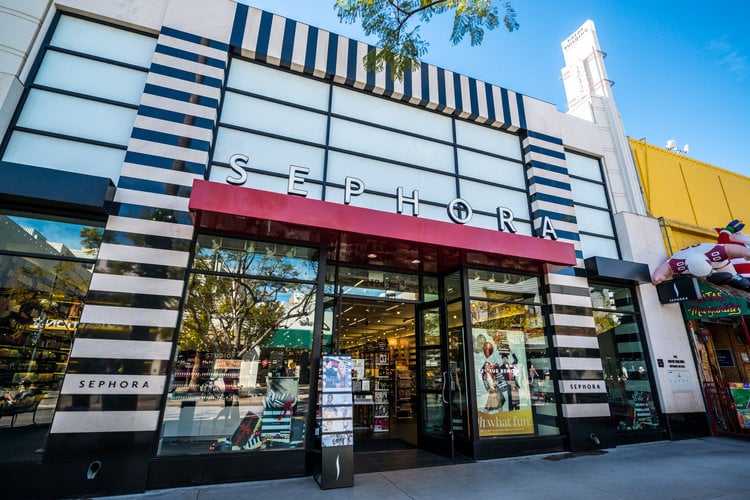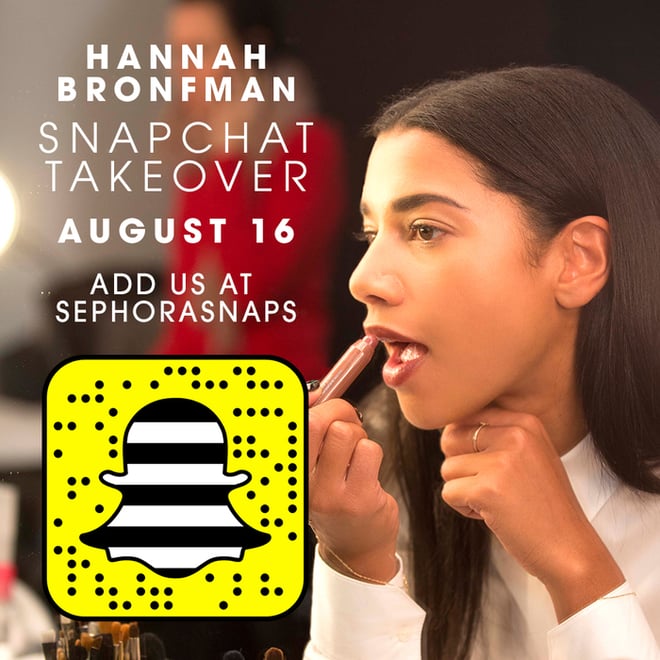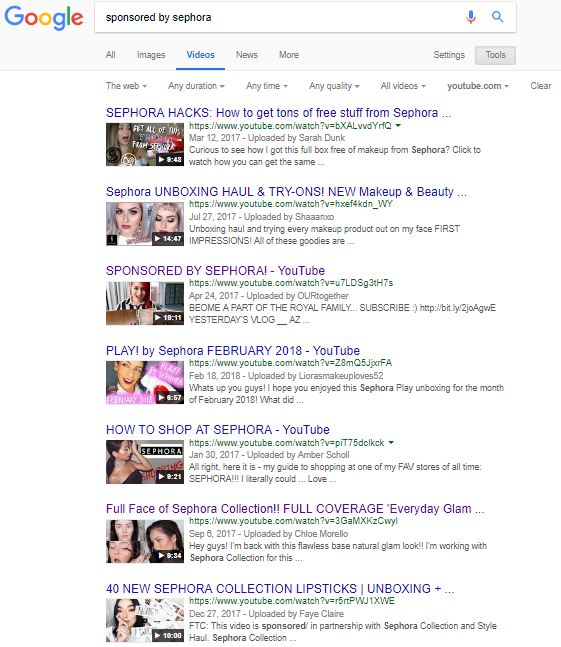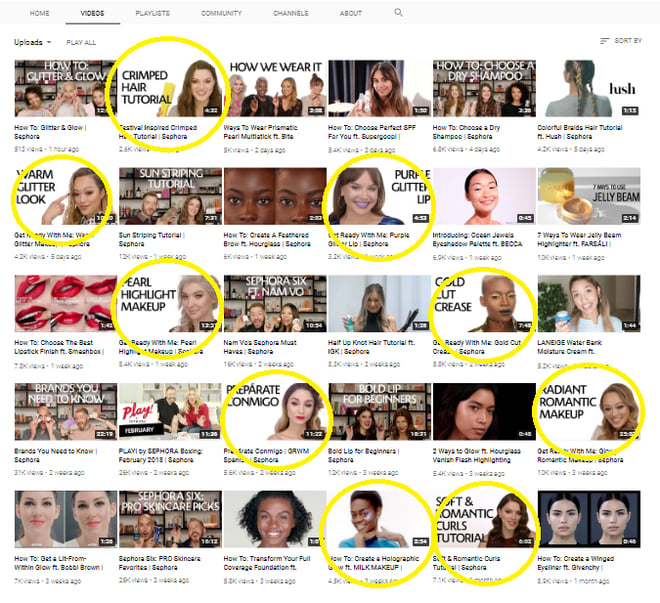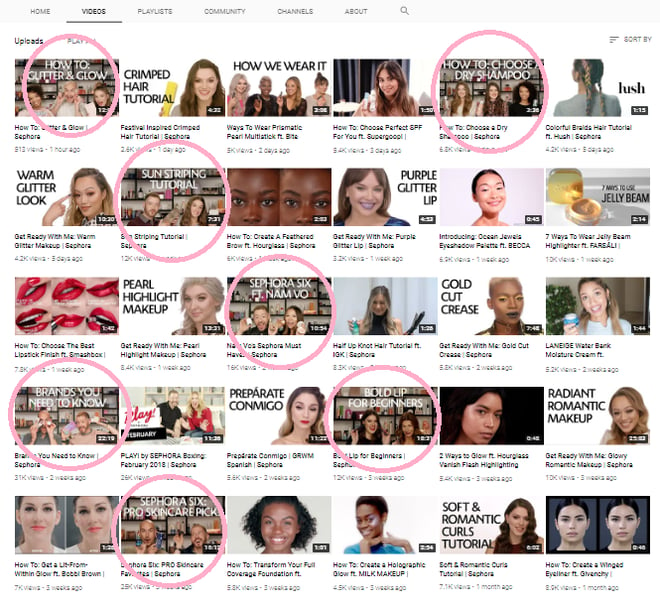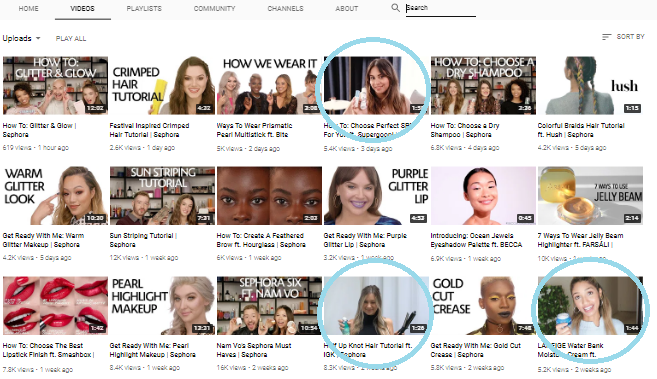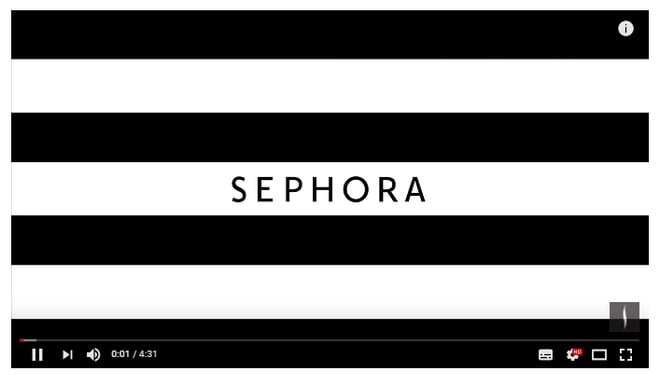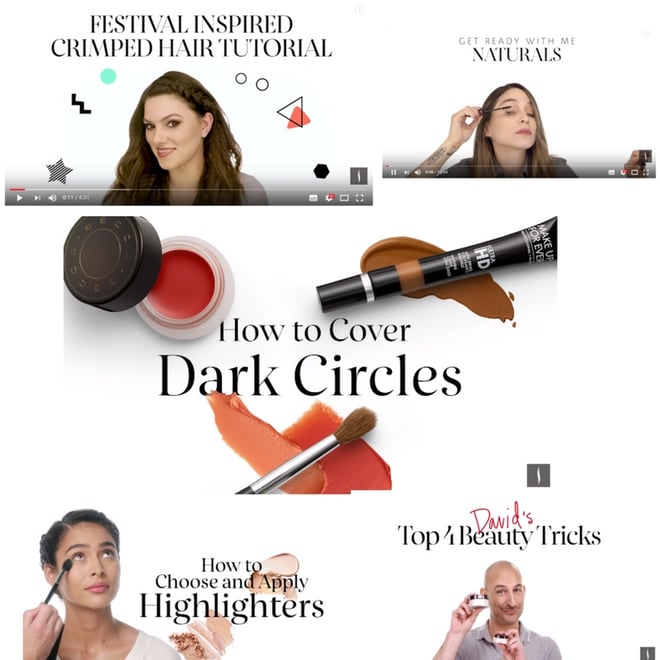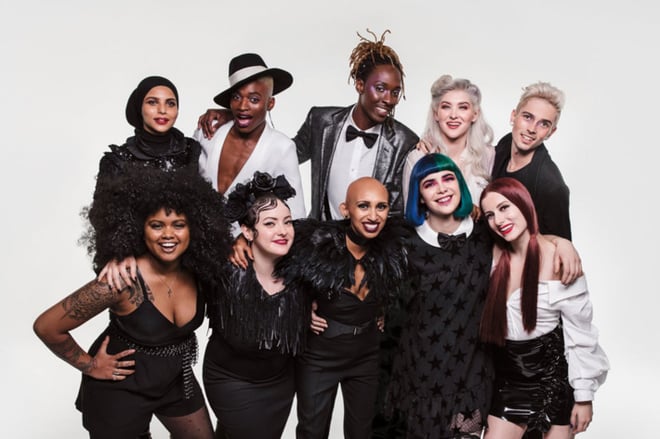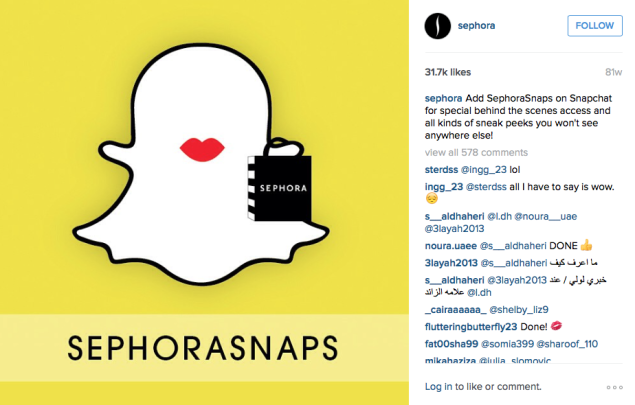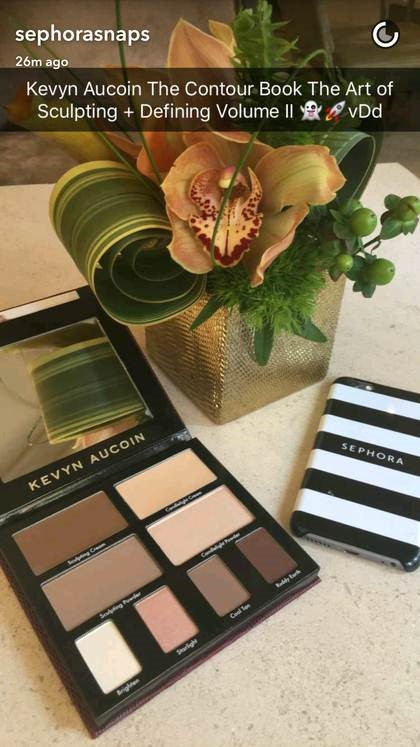An average woman spends around 55 minutes every single day applying makeup. So it’s no surprise the value of global beauty industry is expected to reach $675 billion by 2020.
Beauty brands, like Sephora, who are staying in touch with all the latest marketing trends and tactics have seen an explosive growth in their brand value and yearly revenue. Sephora is currently worth a crazy $37.2 billion with,
-
962k followers on YouTube
-
13.9 million followers on Instagram
-
17 million likes on Facebook
-
2.4 million followers on Twitter
Much of their success comes from their video marketing prowess via these very platforms. Because let's face it, in the age of online buying, who’d buy a $30 foundation without going through a million reviews on YouTube? And Instagram? And SnapChat?
No one. Exactly.
So the beauty world and video go hand in hand.
Sephora also focuses on creating videos at scale. While using Wipster, Sephora went from 250 videos in 2016 to over 600 in 2017. Their ability to work efficiently and publish more video faster means they get in front of more of their audience with highly targeted content. It's all about the right content, at the right time, for the best beauty experience.
“We’ve always been a playful environment, it’s one of the disruptive initiatives that Sephora brought to the market, broke the glass camera and really created an unbiased beauty experience. As more and more clients were shopping online, we really challenged ourselves in how do we bring that differentiation of play out of the store and onto the phone and our partnership with virtual artist was born.”
Calvin McDonald, CEO and President of Sephora
1. Queen of Influencer Marketing
When it comes to the brand’s criteria for these influencers, it’s focused primarily on millennials who are just beginning to play with beauty.
Deborah Yeh, Sephora’s senior vice president of marketing and brand.
Sephora’s influencer campaigns scream real. They partner with authentic influencers; people who’re truly obsessed by beauty and have built powerful empires by demonstrating their beauty expertise.
As a Sephora representative said,
‘One fun story Sephora shared was about an influencer who created a video with Urban Decay’s Primer Potion, back when it was shaped like a genie bottle. The influencer actually cut the bottle in half - on video - so that she could scoop out the last bits of the product. Sephora and Urban Decay were huge fans of this video, because it was authentic -- the influencer loved the product so much that she wanted to get out every last drop she could.’
They’ve partnered with influencers in several different ways.
SnapChat takeovers
Sephora collaborated with Clinique spokeswoman, Hannah Bronfman, on a live SnapChat takeover. Hannah showed SnapChat followers her daily beauty routine and introduced products that she used and loved.


